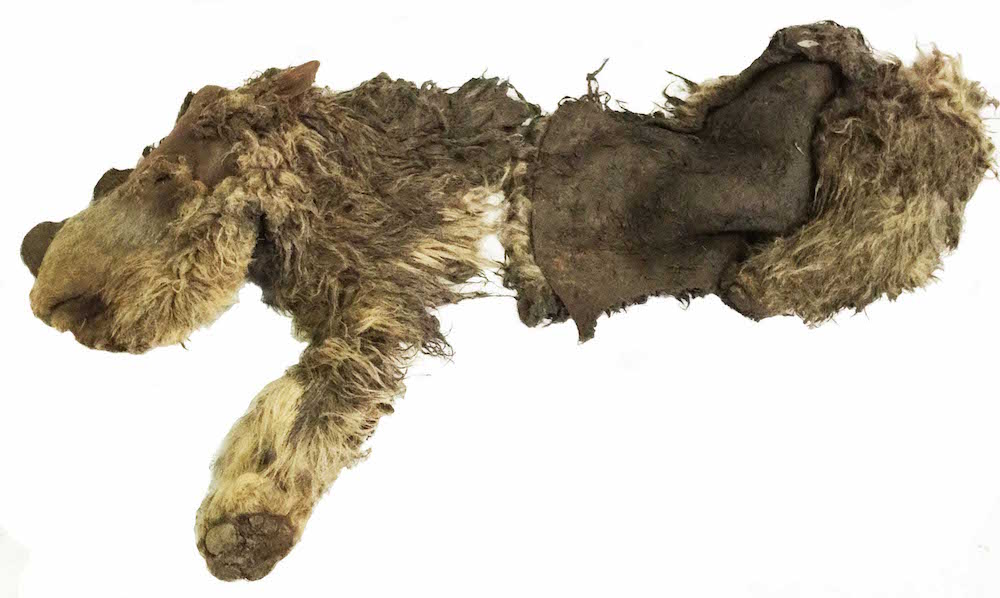10,000-Year-Old Remains of Extinct Woolly Rhino Baby Discovered

The remains of a baby woolly rhino that roamed the Earth at least 10,000 years ago have been discovered in a frozen riverbank in Siberia, researchers said.
The rhino calf, nicknamed "Sasha" after the hunter and businessman who found it, is the only complete young specimen of the extinct species ever found, according to scientists at the Yakutian Academy of Sciences in Russia, to whom the creature was donated for study.
The researchers hope to extract DNA from the specimen to determine its placement on the mammal family tree. [See photos of Sasha, the baby woolly rhino]
"The newly found [calf] is about 1.5 meters long [4.9 feet] and 0.8 meters high [2.6 feet]," said study researcher Albert Protopopov, head of the mammoth fauna studies department of the Yakutian Academy of Sciences in Russia, as translated by Olga Potapova, the collections curator and manager at the Mammoth Site of Hot Springs, South Dakota. By contrast, adults of this species could reach up to 15 feet (4.5 m) long and 6 feet (1.9 m) high at the shoulders, Protopopov said.
A rare find
Since the 18th century, the remains of only a few adult woolly rhinos have been discovered. Two complete bodies without hair were found in Staruni in what is now Ukraine, and a headless, frozen mummy was found in eastern Siberia, Potapova said. Woolly rhinos were depicted in late Paleolithic cave paintings in Western Europe, which add to scientists' knowledge of what the animals looked like, she added.
But the remains of rhino calves are very rare and fragmented, and little to nothing is known about the young animals, Protopopov told Live Science, via Potapova. Woolly rhinos likely had very high infant mortality — "that’s why [Sasha] is a very lucky find for us," he said.
Sign up for the Live Science daily newsletter now
Get the world’s most fascinating discoveries delivered straight to your inbox.
The new remains are from a very young rhino, probably between 3 and 4 years old, said fellow researcher Evgeny Maschenko, of the Paleontological Institute in Moscow, as translated by Potapova.
"The young rhino mummy was covered by thick hair" and had two fist-size horns that were tightly attached to its skull, Maschenko said. Based on the size of its horns, Sasha had probably already been weaned from its mother, but it's not clear whether the calf was a male or female, he added.
Woolly rhinoceroses (Coelodonta antiquitatis) first appeared some 350,000 years ago during the Pleistocene epoch, which lasted from 2.59 million to 11,700 years ago. The animals fed on mostly low-growing herbaceous vegetation, and were widely found in the mammoth steppe, a vast cold and dry region spanning from Spain in the west to eastern Siberia in the east, and from subarctic latitudes in the north to the Mediterranean, southern Siberia and northern China in the south.
To extinction … and back?
Woolly rhinos lived at the same time as, and shared a habitat with, woolly mammoths, but the two species are not related. The woolly mammoth is a cousin of the modern Asian elephant, whereas the woolly rhino is most closely related to the modern rhino, Potapova said.
Woolly rhinos went extinct about 10,000 years ago. Some scientists believe overhunting was the cause, but the more likely culprit is climate change, which caused the disappearance of the animals' food sources and habitat, researchers said. Unlike other large mammals of the time — such as woolly mammoths, steppe bison, cave lions and native horses — woolly rhinos may not have been able to cross the land bridge now occupied by the Bering Strait, because they were unable to adapt to the tundra climate, the researchers said.
If the researchers can obtain DNA from Sasha, they plan to sequence the animal's genome. This would allow scientists to identify the rhino's closest relatives, and determine whether there were one or two species of woolly rhino in the Late Pleistocene, Protopopov said.
There's been a lot of buzz among scientists lately that it might be possible to bring extinct animals "back to life" by cloning their DNA and breeding them in a related, living animal, a process called de-extinction. Some scientists have suggested using this technique to bring back the woolly mammoth, but could it also be used to revive the woolly rhino?
Currently, it seems too complicated, Protopopov said. Traditional cloning methods won't work for this purpose, he said, because even if his team can reconstruct the complete genome of the rhino specimen, there is no close modern relative with which to perform crossbreeding.
Besides, Maschenko said, even if humans could bring these creatures back from extinction, "should we proceed?"
Follow Tanya Lewis on Twitter. Follow us @livescience, Facebook & Google+. Original article on Live Science.










